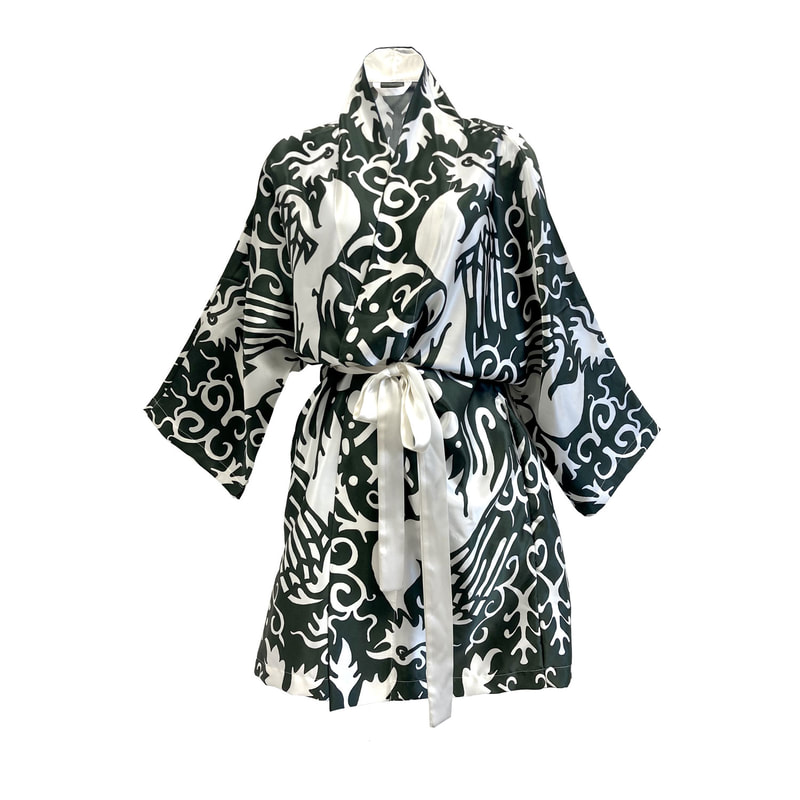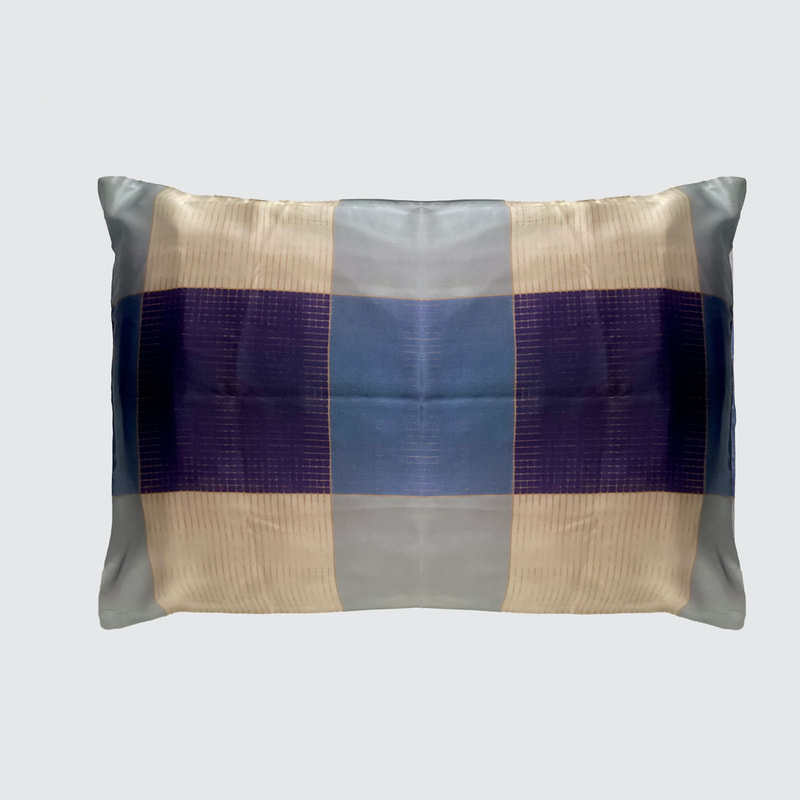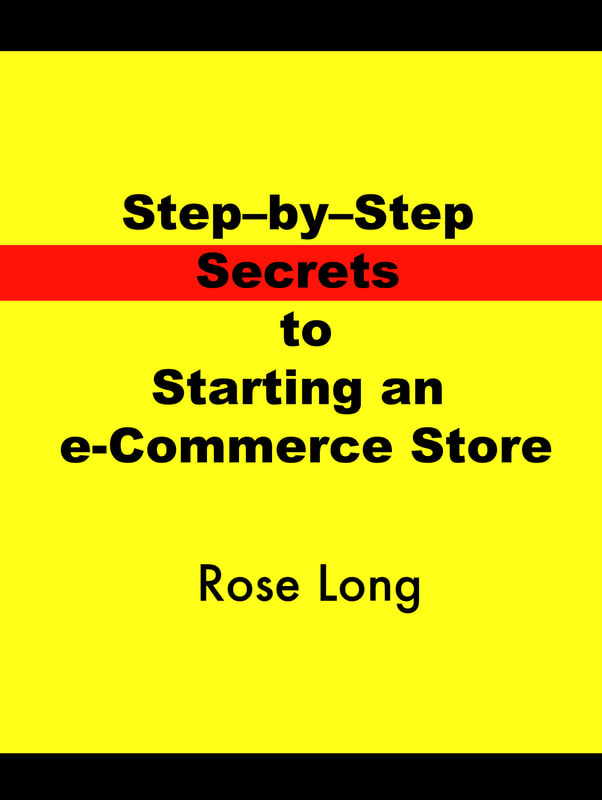0 Comments
2. Concept Ask yourself and answer the following questions:
Endeavor to be authentic, and helpful and memorable. Use humour to get your message across. Write your goals down on a sheet of paper. One of them is being your own boss. Describe your legacy and how you would wish to be remembered. Put a date on the page. You are responsible for how you spend your time and how much time you will spend on your business. No one will hand it to you on a plate. Do not take set-backs or negative criticism personally. Act to change and address the problem. By measuring and analysing the problem. Changing and adjusting the way you deal with the issue to solve it. Don’t allow yourself to hold you back. For more Chapters on Starting an eCommerce Store click on the Catagories to the right of this post. AI - ARTIFICIAL INTELLIGENCE - STEP-BY-STEP SECRETS & GUIDE TO STARTING AN E-COMMERCE STORE2/3/2023 45. AI Artificial Intelligence
What the future holds: Artificial Intelligence. We have entered a Brave New World and it is likely to become as prevalent as the Web 2.0 internet is today. This is a disruptive model that we will need to become familiar with it to be able to use it efficiently and to our advantage. It is untested and nothing in this blog should be taken as advice or recommendations. AI’s crawl the internet and pull together information based on your prompts to create a solution. When starting your business there are already many AI programmes that are designed to save you time and provide help to get up and running. Many of the services these new websites provide are free. The learning curve of using these products is quite quick. The big players in AI are: · Microsoft who has partnered with OpenAI · Azure provides the infrastructure for AI · GEForce RTX super series - high end chip maker with huge processing power to run advanced AI apps · Google – Alphabet is the parent company for DeepMind. Google is adding more AI to its business. The following are some interesting AI software: ChatGPT Chatbot powered by IBM Watson founded by Elon Musk. Web 3 AI. Ask it anything: ie Write me a 2,000 word romance novel book. · ChatGPT writes anything · Whisper api – Developers can now integrate ChatGPT and Whisper models into their apps and products through OpenAI’s API. o Whisper is an automatic speech recognition system that transcribes voice into text. OpenAI ‘claims enables “robust” transcription in multiple languages as well as translation from those languages into English.’ Real time suggestions · Jarvis Prompt ideas · FlowGPT · Learnprompt.org Art · MidJourney ai · www.jasper.ai/art - Creates realistic art · https://stablediffusionweb.com/ · Stable Diffusion is a latent text-to-image diffusion model capable of generating photo-realistic images given any text input. Animated Drawing sketch.metademolab.com Blogs summaries · Genei.io Content optimisation · ContentKing · ProseMedia Copy writing · Persado - Create high performing ad copy · Jasper: writing with keywords and the AI creates the copy. · [https://www.jasper.ai] in 26 languages. Chrome browser. · Copy.ai -marketing copy · Notion ai - writing assistant · Compose ai – google chrome extension – cuts writing time by 40% with ai auto completion and text generation · Quillbot – rephrases text and checks grammer · Rewrite Guru – ai paraphraser · Pfpmaker.com · Codermer - Generate headlines and product descriptions Email addresses · Hunter.io - Hunter lets you find professional email addresses in seconds and connect with the people that matter for your business. Analyse competitors’ ad strategies · Adbeat Law · www.DoNotPay.com PPT content generator · Tome ai Lead Generation · [https://phantombuster.com] PhantomBuster allows one to extract lists of leads. For example, young male communities from the U.K. are discovering and shopping for trainers, watches, and collectibles together, in a phenomenon known as “squad shopping”. · https://www.squadded.co/ Business growth · Akkio - Data driven decision making Sales and Marketing · SiteRight [siteright.co/how-it-works] · [builtwith.com] - BuiltWith Technology Lookup Database directory · The Hive Index [thehiveindex.com] · [chrome://net-internals/#dns] · Similarweb.com Marketing · Beautiful.ai – makes presentations · SlidesAI - presentations · Synthesia – makes marketing videos · NeonTools [https://neontools.io] o Create short links and track clicks [neon.ly] o Create micro landing pages [neon.page] o QR code generator Music Generators · Aiva – Melody Generator PDFs · iLovePDF [https://www.ilovepdf.com/] - PDF tools; Merge, Compress, PDF to Word, Word to PDF, edit, PDF to JPG, Sign PDF, Watermark Search Engine for Newsletters · www.milled.com - Find sales, deals, coupons, and discount codes from brands and retailers. SEO · PrePostSEO [https://www.prepostseo.com/] Search engine · Perplexity ai Sound · Adobe podcast – Recording · Trendingsounds.io · Beatoven.ai – content creator and generate original music Turn a Book into an Audiobook · ACX.com Video · www.synthesia.io - Turns text into a video · https://lumen5.com/ - Grow your brand and drive demand with video at scale. Text or article into a YouTube video · Create.studio.official · Aiimages.ai – online video enhancer · https://research.runwayml.com/gen1 · Gen-1 by runway turns video or image or text prompt into any cartoon or other format · VREW – generates captions from speech in your video editor 3. Ethos and Business Model
4. Business Plan
In order to maximise the success of your business, you must think through what your business entails. You should be able to clearly explain the basics of how your business will work so that the reader should be able to understand what the business is about. Your Business Plan is always a work in progress and never the final document. It will always need to be updated. The following headings will help you to cover areas to be described, analysed and clarified in the Business Plan. Although a Business Plan is not a guarantee that the business will be a success, it is an extremely useful document that helps clarify your direction forward and is a requirement when raising funding for the business. Your Business Plan should describe clearly:
Describe the company structure: Why have you chosen this particular type of business structure. i.e. sole trader or limited company. Aims: Name at least 5 goals you would like to achieve. Describe these in different time lines. i.e. one year, three years and over five years. What are the financial goals you would like to achieve in the 1st year. Funding: How much money will you need to start your business and how much will you need to maintain it. How much will you need to up scale the business and make it grow. Where will you get the funds from. Are you putting funds into the business yourself. If not, why not. Decide on a business Name: The name defines your business, helps it stand out from your competitors and people will often form an impression based on this name. You could start by thinking of a short catchy phrase. Although this is not essential, this can help people to remember your brand. This often is seen hand-in-hand with your logo. Elevator Pitch: Can you describe your business in 2 minutes (the time it would take to travel in a lift to another floor). Talk about what your business does; who is your audience and what is the business’s unique selling proposition. The Founder/ Owner: Describe why you want to start this business and why you are the right person to start it. Think about if you have the required and appropriate skills, knowledge, qualifications, training and experience to make it work. Would your hobbies and outside interests help add to the success of the business. What is your product or service (or both): Explain this very clearly so that people will really understand what you are offering. Imagine explaining it to a real novice. You can add images to help describe the product or service. Customers – who are they: Is yours a niche business? Work out who your audience/customers will be. Market Research; This should help clarify your understanding of who you are aiming to sell to. Be specific. Are they businesses or individuals. Have you sold any products and /or services already. Information from these activities will be invaluable market research. Do you have a waiting list of customers for your products and/or services. Marketing: How will you find your customers. Where will you market. Include the costs associated with methods of marketing. Marketing opportunities include:
Who are your competitors: What is your USP (Unique Selling Proposition) compared to your competitors. Use a ‘SWOT’ Analysis. This looks at both their and your
Describe what you will do to address your weaknesses and possible external threats. How will you take advantage of opportunities and how will you work on your strengths. Cashflow and Cost Analysis: Include all costs which may include:
Cost Analysis: Work out your costs and profit margin. Systems: How will the business work day-to-day. What technology do you have. Can this be improved to improve your speed of work. What systems can you set up to help you. 5. Funding and Investment
However much money you work out you will need, double it! There are varied routes to find investment for your company.
6. Market Research
This research should help you to understand who your market is and how it behaves as well as what your potential customers expect from you, your products and/or services. Market Research can take the form of field work and research from your desk (internet and books). Research other businesses and their customers that are providing similar services. Research locally first.
In the field ask potential customers what they think of your business idea and product. Test whether they will buy your product. Ask questions like: ‘Are you happy or unhappy with the product?’ ‘Would you buy my product at ‘x’ price?’ ‘Would you buy from this location e.g. online website?’ ‘Do you already buy from similar businesses?’ Testing your product: What products did you try to sell and at what price. What did you learn after test trading. Are there things you have decided to change because of what you learnt or because of the feedback you received. Cashflow and cost analysis Back-up plan. Have a Plan B. This might just include on your reducing your costs or having a smaller inventory to save on costs. 7. Company Structure - What Type of Business
Retain professional advice on how you choose and proceed. In the UK you can choose to be a Sole Trader or Limited Company It is straightforward to become a Sole Trader but remember you are personally responsible for your business’s debts. A Limited Company’s finances are separate from your personal finances, but there are more reporting and management responsibilities. [https://www.gov.uk/running-a-limited-company] Register your business with Companies House or the relevant authority in your country. In the USA and other countries, there are different rules and different options. e.g. registering an LLC. 8. Online Selling in the UK
Before an order is placed You must provide:
Right to cancel You must tell the customer they can cancel their order up to 14 days after their order is delivered. They do not need to give a reason for cancelling. If you do not tell the customer about their right to cancel, they can cancel at any time in the next 12 months. If you tell them about the right to cancel during these 12 months, they have 14 days to cancel from when you told them. There are different rules for downloads and streaming services. [https://www.gov.uk/online-and-distance-selling-for-businesses/online-selling] After an order is placed You must:
9. Branding
When establishing your brand identity, consider:
Types of Brand Names:
When choosing your brand name:
The Formations company help with creating a name Domain name It is imperative to have a domain and presence on the internet. The best urls ends in a .com. Domains (URLs) can be purchased through:
Email address: You will need a professional email address based on your domain name. (Not just a gmail or yahoo address). Graphics: You will need:
You could use AI or go to a graphic design company or find freelancers to help you at: fiverr. Tailor Brands provides packages with tools to help you start your business and appear professional. [https://www.tailorbrands.com] 10. Choosing the Product (Service or Course):
I will talk specifically about products, but these principles equally apply to you providing a service or course. When deciding on the product/s you want to sell choose a market and identify 5 niche markets that really interest you. Dig down into the niche until it is very specific and that you can describe it in detail. e.g. home décor – scented candle making.
Generally, there is almost always a market for health, wealth and relationships. Markets and their niches of e-commerce are broadly:
Research the latest Trends connected with your niche. Look at reviews and note the common complaints and as well as the common compliments. Research on blogs, Facebook groups, Pinterest and Instagram reddit and YouTube. Check out competitors. Buy their product and determine why you bought it. Look at where it was sold an advertised. Look at indirect competitors. These businesses sell complementary products to yours. These can be very valuable allies in the future who you might collaborate with and market jointly to both your benefit. Make sure your product is of a high quality. 11. Trends
Tap into the zeitgeist. The spirit of the times. Plan for the future. Great websites to help define the latest trends are:
12. Competitors
You need to know about your competitors.
13. Designing the Product
If you decide on selling a ready-made product the key thing is to research who your market is and what your pricing will be like. But you may wish to design your product and make it or then have it manufactured. Design is often the most time-consuming part of the e-commerce journey. Creating the designs / patterns / artwork and then using 3d to see what the product looks like. However, it is often the most satisfying and creative of all the processes and keeps the designer coming back to design more. A word of caution - Infringing copyright. Be careful to use your own personal and original designs and artwork - the expression of an idea. It is easy to drag things off the internet and copy them, but this is illegal and undermines the original designer’s business and work and is very demoralizing for a designer whose work has been stolen. 14. Trademark
You need to protect your brand. Registering a trademark is one way to do this. How to obtain a trademark:
15. History of the Product - One Digital ID:
There is a move by brands and manufacturers to record digitally the lifecycle of how a product is made and where its materials come from. These can be captured in a QR code which link to information web pages in the cloud. This project is called Eon. [https://www.eon.xyz/] Customers can interact with this information and read about the authenticity, origin, services and even storytelling of the product they have purchased. 16. Manufacturers
Choosing your product goes hand-in-hand with finding a manufacturer. You could make the product or create the service yourself or you could outsource the manufacture of the product. Deal with manufacturer and not the middleman trader. Find and compare prices and quality from at least 3 suppliers. When approaching a manufacturer remember to ask about MOQs. M.O.Q’s Minimum Order Quantity. Remember to research this before you order as minimum quantities can raise your costs substantially and then you may be stuck with stock you cannot move but have to store. There are companies who will make low quantities some even will make one-offs. The reason manufacturer’s often have MOQs is it costs them less to make a number of the same item and thus the order becomes more profitable the higher the number of orders. There is less waste of material as well and better use of staff time. One major disadvantage with inventory and m.o.q’s is that your capital is tied up. You have to store the inventory and if it does not sell this is a very unsustainable environmental model. If you want to develop your brand ask if the manufacturer can provide a Private Label service where only your brand name appears on the product. This is exclusive to you. Under a White Label agreement a manufacturer can sell the generic product it makes to many different retailers. You will need to get samples made which will have a cost factor involved. If you look for local manufacturers you will save on International shipping and the potential delays that go with that. It is much better for the environment to manufacture locally. 17. Dropshipping
With dropshipping the supplier handles the manufacture, fulfilment and shipping. You will find the customers. A great advantage with dropshipping is that you do not have to purchase the product in large quantities. When researching your supplier, make sure you read the reviews and check that they are a legitimate and reputable business. Find out what the quality of the product is like. You can check this yourself by ordering a product that you can feel and touch. Rather use a manufacturer, as opposed to a go-between, who would take a cut. Dropshipping with countries that manufacture goods far away will increase your shipping fees and shipping times as well as potentially have more logistic problems (remember the Suez Channel container ship that ran aground and held up over 300 other container ships which caused world trade traffic delays for weeks in 2021). 18. Audience
It is essential to identify your audience and who you are talking to. Consider:
It is widely accepted that the following Western demographic generational identifiers separate ways of thinking and operating in the world as well as their buying habits and are often considered as target markets.
Consider what medium will you communicate with your customers i.e. social media, newsletters, advertising. 19. Pricing your Product (or Service)
Consider these general principles when pricing your product.
In order to price your product, you must take the following costs into consideration. 1. Variable Cost Considerations These costs relate directly to your product and having your product made. Consider:
2. Profit margin: Set the profit margin on top of the Variable Costs. This is often known as Cost Plus Strategy Pricing. The profit margin is the percentage of the sale that is your profit. Target price = (Variable cost per product) / (1 - your desired profit margin as a decimal) Take your total variable costs and divide them by 1, minus your desired profit margin expressed as a decimal. So, for a 20% profit margin, that is 0.2, so you divide your variable costs by 0.8. 3. Fixed costs These need to be factored in. For example, insurance, rent, licences, employees’ payroll. Review your pricing regularly. See Cost Analysis (LINK) below as an ongoing strategy to assess your businesses prices and profit margins. Remember to consider cash flow. You need this to keep the business ticking over. Compare your price to your competitors’ prices and marketplace trends and consumer spending. Adjust your pricing accordingly remember that you need to make a profit to remain in business. Incentivise your customer to buy more than one product by discounting on more than one purchase. This will often work in your favour as some suppliers will incentivise your prices in the same way for you if you buy more than one product. Compare different manufacturers prices. Consider your bargaining power with your suppliers. Consider which pricing bracket you want to fit in. Higher Pricing Bracket: Upmarket – pricing different. Be careful not to under-price. Your market is looking to improve or confirm their status. Have a unique product not available elsewhere. Creativity has a value. Lower Pricing Bracket: Competing in the lower pricing bracket – usually something ready-made and available elsewhere. Pricing is key. Beat your competitors on pricing. 20. Sustainability
This is your investment in the future. Sustainability is now being considered as an indicator of good management of a company. Many of your customers will share these beliefs and feel your company aligns with their values. Sustainability has a large societal impact. It relates to how your business affects the local and further afield community. It impacts your financial sustainability. Try to follow compliance standards often set up by environmental organisations. Sustainability has a positive brand association and good publicity and will attract customers who have similar ethos. Aim to consider the following:
21. Photography of the Product People want to see pictures of your product both in detail and in a setting. If you cannot afford to use a professional photographer, you can get a good result even using your phone camera. Make sure of the following:
The images here are from the luxury online store Long Studio Design.
22. Product Packaging
You must communicate your brand logo, message, fonts, colours and feel in all your packaging. Tinybox [https://www.tinyboxcompany.co.uk/] is a manufacturer where you can buy as few as 1 piece. They will brand packaging as well. 23. Unique Product Identifiers
GTIN, SKUs and MPNs Unique identifiers such as GTIN, UPC, and EAN and MPN are created to easily and quickly identify a particular product or part of a product. GTIN: More and more companies are requiring their trading partners to use GS1 standards to help move and track goods through the supply chain. If you are trading with Tesco, Amazon or other retailers, you may have been asked to create a GS1 logistics label with a Serial Shipping Container Code (SSCC) for your shippers. Google requires this or a MPN for Google Shopping. GS1 [https://www.gs1uk.org/] GS1 are one of 116 neutral, not-for-profit, and independent GS1 organisations operating across 150 countries. They provide products from barcodes to patient wristbands. “GS1 is the only authorised provider of Global Trade Item Numbers (GTINs) – the number you see under the barcode (also known as an EAN or UPC) that’s unique to that product. Our GTINs and barcodes are used and accepted by retailers and marketplaces across the world – making it easy to sell your products anywhere.” SKUs: An SKU is a Stock Keeping Unit (Pronounced ‘skew’). These are allocated by the product designer/manufacturer to each individual product to easily identify it when tracking inventory or searching for an item accurately, Tracking lot and batch numbers allows one to keep watch on quality control, service and warranty management and to help isolate production faults. No two products should have the same SKU. Even variants such as size, colour etc should have separate SKUs. When creating SKUs, the following three principles help to create them easily.
When creating the SKU number try to:
MPN: MPN stands for Manufacturer Part Number. Manufacturer part numbers are used as an unique identifier to find specific products. 24. Shipping
Consider free shipping. Free shipping is an invaluable resource to allow sales to complete. Many customers are put off by extra shipping costs at check out. If you do charge extra for shipping make sure you communicate this on the product page or earlier. Make returning goods easy. Couriers (often based internationally) and your Country’s Local Postal Services:
|
Author
Archives
October 2023
Categories
All
|
Copyright © 2024 Rose Long. All rights reserved.







 RSS Feed
RSS Feed